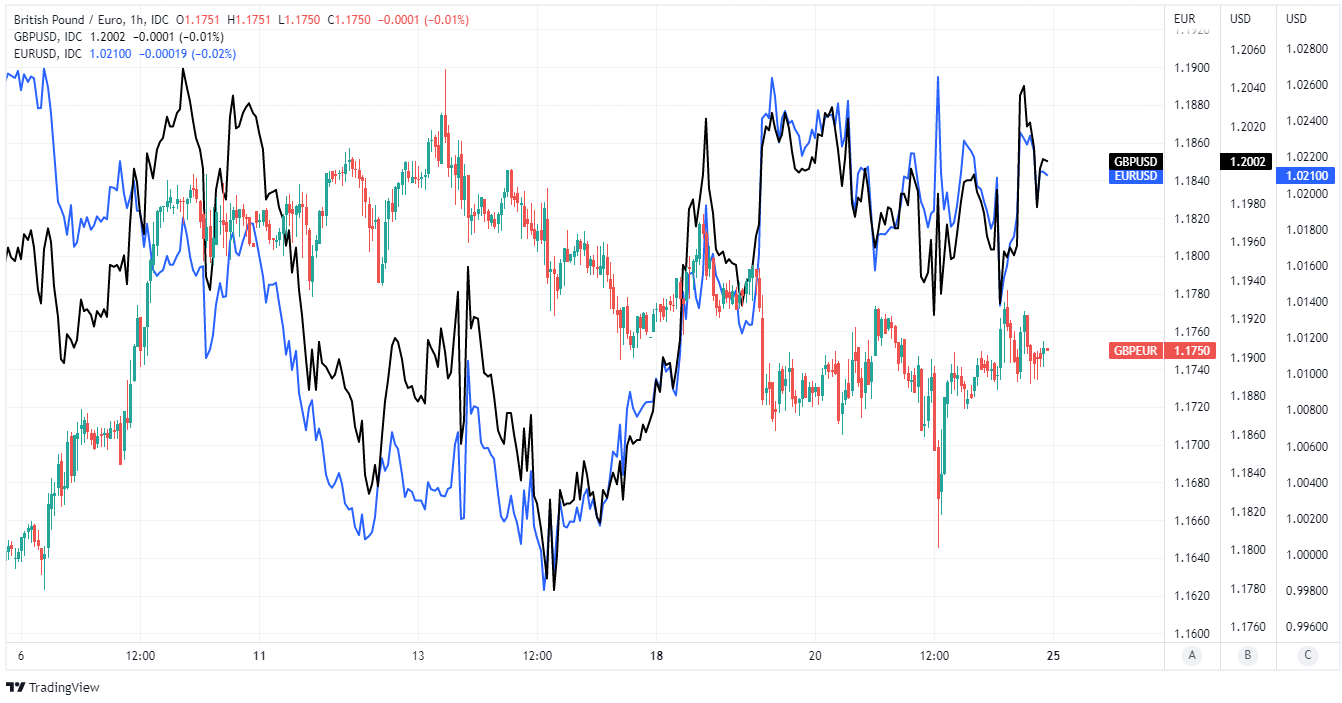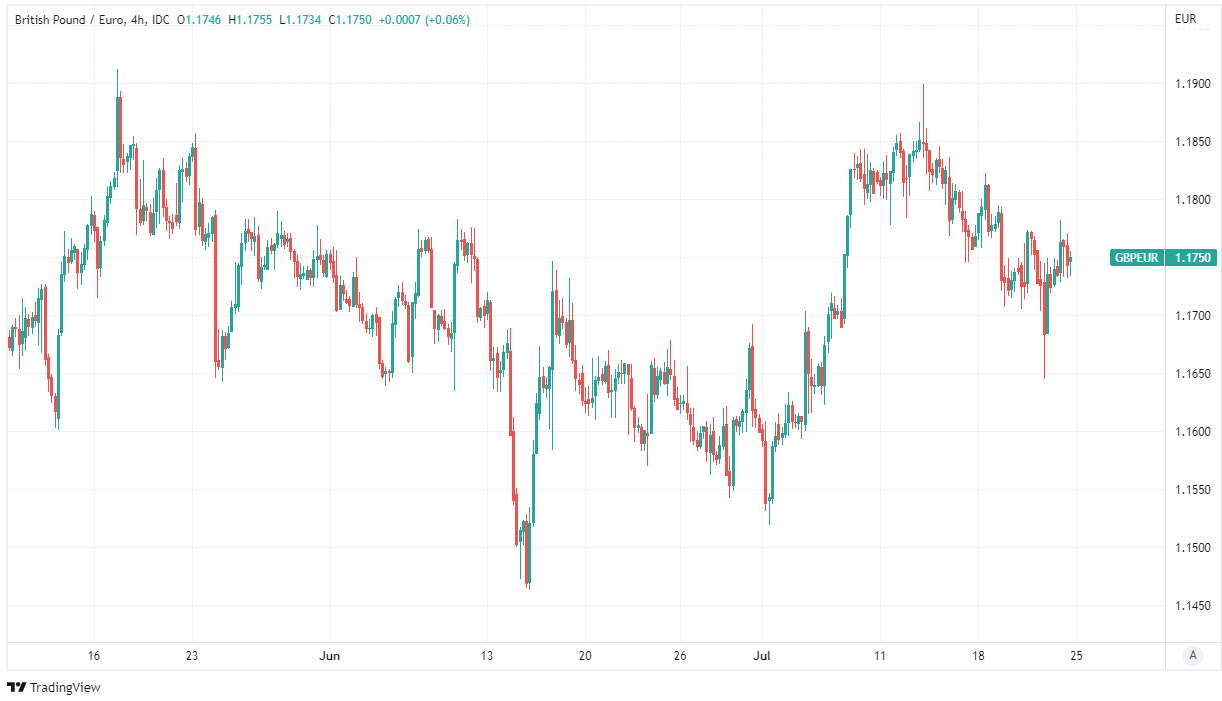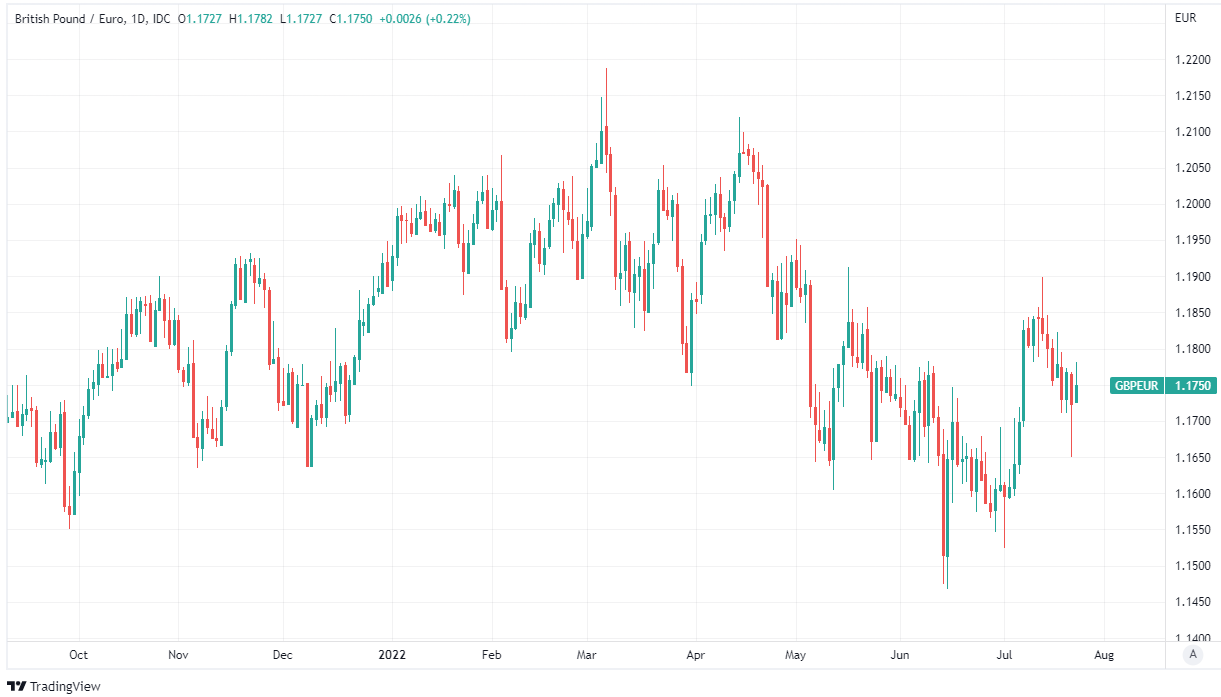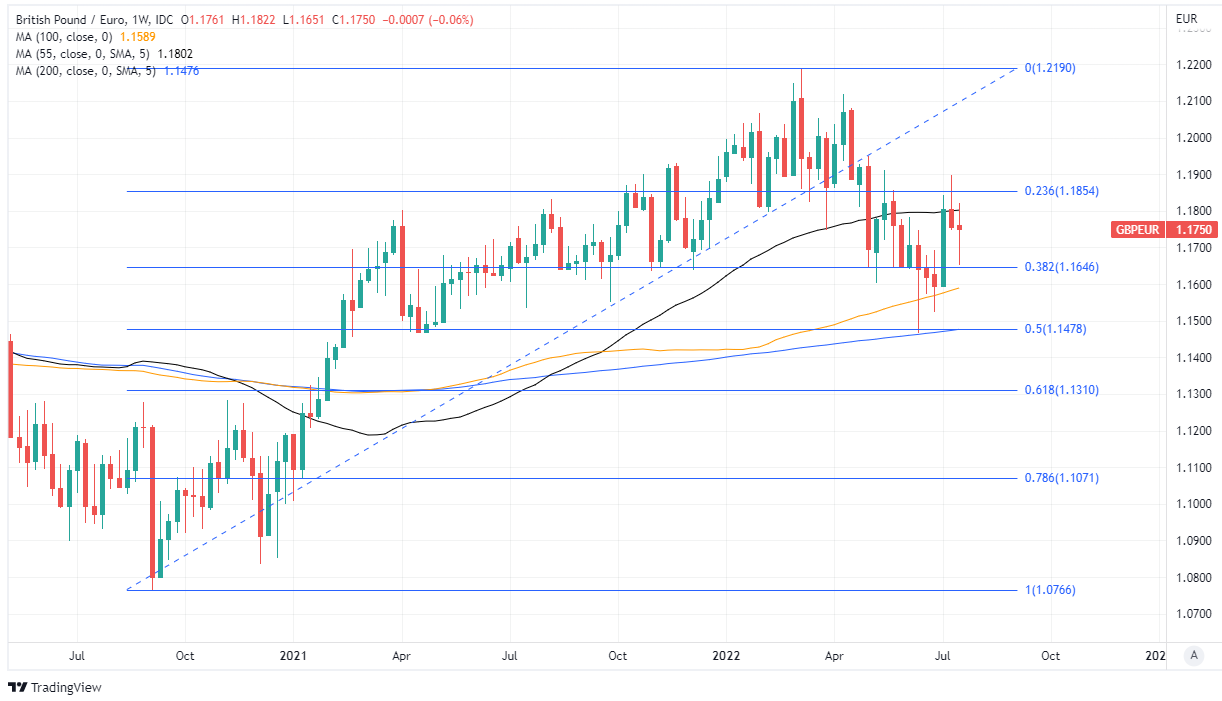GBP/EUR Week Ahead Forecast: 1.1705 to 1.1787 Range Possible
- Written by: James Skinner
-
- GBP/EUR consolidation in 1.1705-1.1787 range possible
- As GDP, inflation trends & central bank policies converge
- Europe CPI & GDP figures key in quiet week for UK data

Image © Adobe Images
The Pound to Euro exchange rate has been contained within a narrow range and could remain so in the days ahead with trade spanning the gap between roughly 1.1705 and 1.1787 this week unless European inflation data surprises notably on the upside, or GDP to the downside, of expectations this Friday.
Sterling traded as low as 1.1650 against the Euro last week after the European Central Bank (ECB) surprised the market with a 0.5% increase in all borrowing and lending rates that signalled an immediate end to a five years long era of negative interest rates in the Euro Area.
But the Pound was quick to recover when the Euro’s rally faded after President Christine Lagarde described the larger than expected move as an act of “frontloading” that does not necessarily mean the ECB’s interest rates are set to rise any further in overall terms than markets had previously assumed.
“At our upcoming meetings, further normalisation of interest rates will be appropriate. The frontloading today of the exit from negative interest rates allows us to make a transition to a meeting-by-meeting approach to our interest rate decisions,” President Lagarde said in the press conference.
“Our future policy rate path will continue to be data-dependent and will help us deliver on our two per cent inflation target over the medium term,” she added in remarks that are highly pertinent for the single currency.
 Above: Pound to Euro rate shown at hourly intervals alongside GBP/USD and EUR/USD. Click image for closer inspection.
Above: Pound to Euro rate shown at hourly intervals alongside GBP/USD and EUR/USD. Click image for closer inspection.
The Pound to Euro rebound was helped last Friday when S&P Global PMI surveys of the manufacturing and services sectors fell by less than was expected for the UK and also by much less than was the case for their European and U.S. equivalents.
“Weak public finance data highlighted that there are limits on the extent to which any new leader of the ruling Conservative Party can loosen fiscal policy to support growth,” says Paul Robson, European head of G10 FX strategy at Natwest Markets, in reference to other UK data out last Friday.
“But a weak economic outlook is a mature story, particularly against other European economies. We thus continue to see EUR/GBP trading lower [GBP/EUR higher] through the summer,” Robson and colleagues said in a Friday research briefing.
This week is devoid of significant appointments in the domestic calendar following a busy period for UK data and will likely see much of the market's attention focused on a loaded roster of event risk for Europe and the U.S., which could have direct and indirect implications for GBP/EUR.
 Above: Pound to Euro rate shown at 4-hour intervals. Click image for closer inspection.
Above: Pound to Euro rate shown at 4-hour intervals. Click image for closer inspection.
This Friday’s inflation figures for July and GDP data for the second quarter are the highlights in Europe and may further impact expectations for ECB interest rates in September and beyond, which were already downsized following last Friday's release of the S&P Global PMI surveys.
“The outlook for European economies has weakened considerably in recent months. The flash purchasing managers indices for July released today confirm that Europe is probably heading for recession” says Dr. Salomon Fiedler, an economist at Berenberg.
“Although the UK, which is less exposed to risks associated with Russian gas supplies, held up better, the momentum is negative in the UK as well,” Fiedler and colleagues said in a Friday review of the PMI data.
The market-implied ECB interest rate for September 08 fell from 0.49% to 0.36% following Friday’s PMI figures, suggesting that investors now see another 50 basis point increase as a 50/50 prospect rather than a foregone conclusion, and will almost certainly be sensitive to the implications of this week's data.
 Above: Pound to Euro rate shown at daily intervals. Click image for closer inspection.
Above: Pound to Euro rate shown at daily intervals. Click image for closer inspection.
“We think the decision to front-load hikes signals, on the one hand, the ECB's willingness to act decisively against the rise in inflation, but also an awareness that the window of opportunity to act is fast closing,” says Silvia Ardagna, chief Euro Area economist at Barclays.
“We forecast a recession in the euro area in Q4/Q1, but July PMIs indicate that the contraction might already be in placeThe first print of euro area Q2 real GDP, to be released on 29 July, will allow us to take stock of the pace of growth in H1,” Ardagna and colleagues said on Friday.
Consensus among economists suggests that Friday’s GDP data will show the Euro Area economy growing by 0.2% for last quarter, which would build on a 0.6% expansion from the prior period, while Europe’s annual inflation rate is expected to edge higher from 8.6% to 8.7%.
Meanwhile, the pace of core inflation, which overlooks energy and food prices, is seen as likely to climb from 3.7% to 3.9% for the month of July.
Above: Pound to Euro rate at weekly intervals and Fibonacci retracements of September 2020 recovery indicating various areas of medium-term technical support and shown with selected moving-averages. Click image for closer inspection.
The Euro might benefit this week, with bearish implications for Sterling, if Friday’s data shows the Eurozone economy holding up better than anticipated or if stronger-than-expected inflation data heaps further pressure onto the ECB.
But in the absence of any unforeseen turmoil for Sterling, the Pound to Euro exchange rate might otherwise be most likely to trade within a range spanning the gap between roughly 1.1705 and 1.1787 levels in the week ahead.
That’s according to the author’s model, which uses sensitivities to the U.S. Dollar and cross-currency triangulation to estimate where non-Dollar exchange rates would be likely to trade as the greenback itself rises and falls.
This would mark a continuation of the sideways trend that has prevailed throughout much of the period since early May, which has also been a period of convergence between outlooks for economic growth, inflation and central bank policies in the UK and Europe.






